Goddess Lakshmi is one of the main Hindu Goddesses in India. In this post, you’ll learn her story, her symbols, her archetype, and some more!
She is considered to be the Goddess of Beauty, Riches, Fortune, and also Prosperity in general. Her attributes are mainly associated with material things.
in her story, we learn how to be wise while dealing with material goods once she adopted Ganesha, the God of Wisdom and son of Parvati.
You can watch the video below to learn about her and continue reading this post for more details, including an excerpt from the Puranas, praising the love between Lakshmi and Vishnu.
In Neo-Paganism, she is considered part of the Mother Face of the Triple Goddess.
Lakshmi, as well as other Hindu Goddesses (Devi) are in my free Goddess Oracle! Use the button below to access it, flip a card and receive a message from a Goddess!
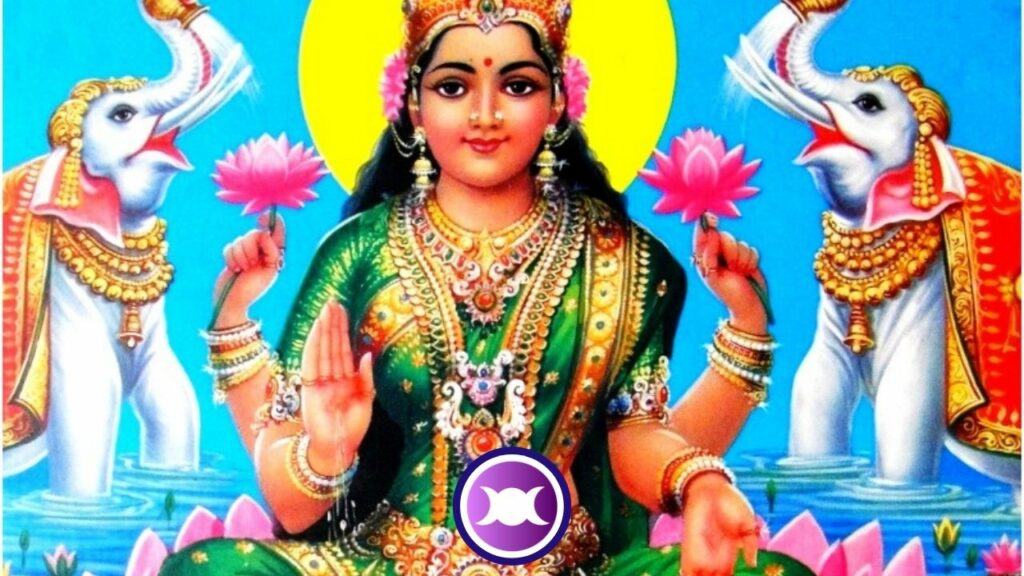
Contents
Goddess Lakshmis’s Story
Lakshmi is a Hindu Goddess who is considered to be part of every woman.
She is usually depicted as a woman with golden skin and four arms symbolizing the goals of mankind:
- Dharma (seek for a moral and ethical life);
- Artha (search for spiritual wealth);
- Kama (search for love, emotional fulfillment);
- Moshka (self-knowledge).
Primary as the Goddess of Wealth, the name Lakshmi means “good luck”. She is revered every Friday on an altar inside the houses of her devotees and she brings fortune to the family. Many merchants also dedicate an altar to her in their businesses places.
She is also seen as the Goddess of Fortune.
She is the Goddess who attracts and generates prosperity, purity, generosity, grace, and charm. However, if she is mistreated or scorned she can bring misfortune and poverty.
It is said she has an evil sister called Alakshmi. Wherever Alakshmi resides, nothing prospers. She may help gamblers to lose everything and face ruin. An amulet made of pepper and lemon can be hung outside the house to prevent Alakshmi from entering.
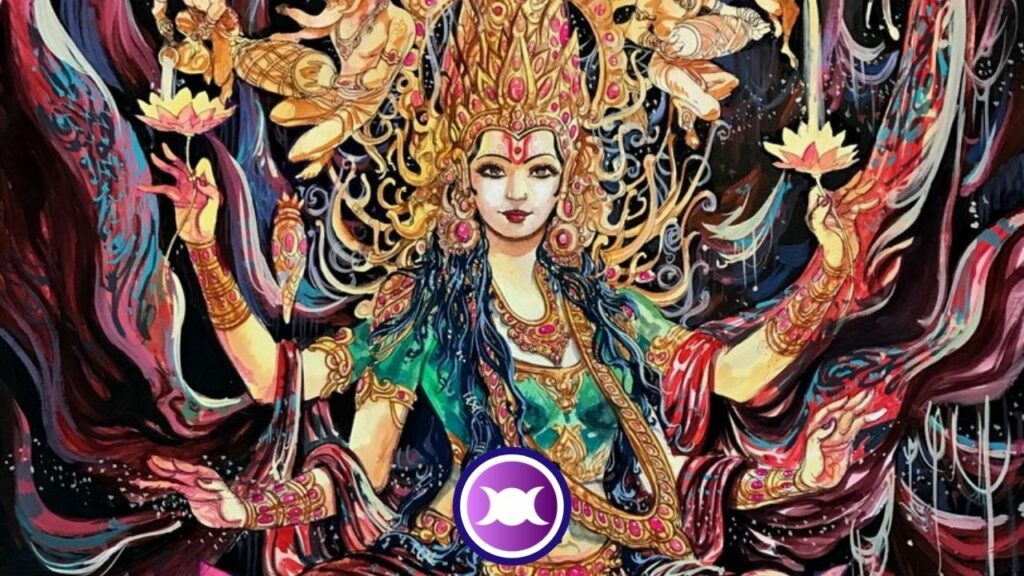
Which are Lakshmi’s main symbols?
Goddess Lakshmi’s main symbols are:
- The Lotus flower;
- Golden coins;
- Elephants spouting water;
- Jewels and sparkling precious stones.
Lakshmi is considered to be:
- Goddess of wealth;
- Goddess of prosperity (both mental and spiritual).
- Goddess of Fortune;
- Goddess of Beauty;
- Goddess of Abundance;
- Goddess of Luck.
An interesting fact is that an ivory statuette was found in Pompeii and it’s called The Pompeii Lakshmi, showing how popular she is, even far away from India.
Ancient Artefact of the Day: The ‘Pompeii Lakshmi’, found in Casa della Statuetta Indiana, Pompeii (I.8.5), a 25cm high ivory statuette thought to represent the Hindu goddess Lakshmi. #AAOTD #Pompeii Image: Naples Archaeological Museum (149425)
Dr Crom
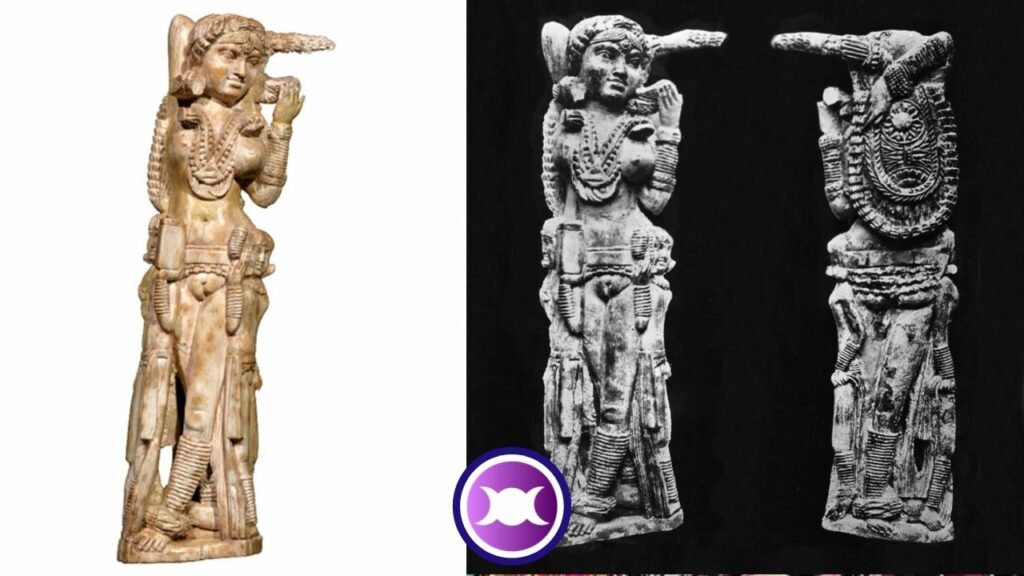
Goddess of Fortune, Vishnu’s Consort
Goddess Lakshmi is also called Sri. During the battle of the gods against the Daityas, the gods were defeated due to a curse cast by Durvasas that left them without strength and without good fortune.
So the Gods called Vishnu and asked him to protect them from the Asuras.
In brief, Vishnu proposed that the Gods and Asuras joined together to churn the ocean of milk, the provider of the nectar of life that would be divided among all.
During the event (this is one of the main events in Hindu Mythology), from a Lotus flower, arises Sri who brings back strength, luck, and fortune to all Gods and becomes the consort of Vishnu.
Wooden Sculpture of God Vishnu on the serpent sheshnag in the cosmic ocean, with Goddess Lakshmi, Hanuman ji, and other revered figures. Dated: 1850, Southern India
History Encyclopedia
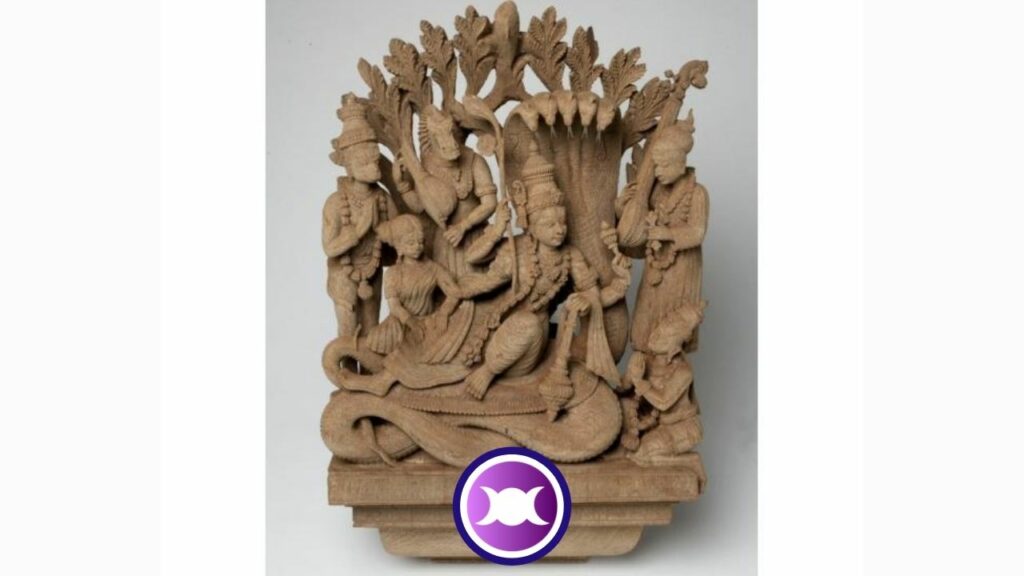
In the text “Visnu and Sri” from the book “Classical Hindu Mythology” the greatness of Lakshmi and Vishnu is praised. Read an excerpt below:
The eternal Sri, loyal to Visnu, is the mother of the world. Just as Visnu pervades the universe, O excellent brahmin, so does she. Visnu is meaning; Sri is speech. She is conduct, Hari is behaviour. Visnu is knowledge; she is insight. He is Dharma; she is virtuous action.
Visnu is the creator, Sri is creation. She is the earth and Hari earth’s upholder. The eternal Laksmi is contentment, o Maitreya, blessed lord is satisfaction. Sri is wish, the lord desire. He is the sacrifice, she the fee. The goddess is the offering of butter, Janardana the sacrificial cake. At the sacrifice, Lakshmi is the women’s hut, Madhusudana the sacrificial site. Laksmi is the altar, Hari the sacrificial pole. Sri is the firewood, the lord the sacred grass. The lord has the nature of the Sama Veda; the lotus-born Sri is the ugitha*. Lakshmi is the svaha cry; Jagannatha Vasudeva is the oblation-eating fire.
*the principal part of the chant called saman.
Sauri the lord is Sankara, and Laksmi is Gauri, excellent brahmin. Kesava is the sun, Maitreya, and the lotus-dwelling goddess is its light. Visnu is the host of the Fathers, Padma the svadha offering of constant nourishment. Sri is the sky; Visnu, the Self of everything, is wide-open space. Sri’s husband is the moon; its beauty is the constant Sri. Lakshmi is fortitude, enacted in the world, Hari the all-pervading wind. Govinda is the ocean, O brahmin; Sri is the shore, great seer.
Laksmi bears the form of Indrani**, while Madhusudana is Indra, her spouse, among the gods. The discus-bearing Visnu is Yama personified; the lotus-dwelling Laksmi is his wife. Sri is prosperity; the one who possesses Sri is the lord of wealth himself. Illustrious Laksmi is Gauri; Kesava is Varuna himself. Sri is the host of gods, chief brahmin, and Hari is lord of the host.
He who bears a mace in his right hand is reliability, O excellent twice-born one; Laksmi is power. Laksmi is the instant, the lord the wink of an eye. He is the hour; she is the second. Laksmi is light; he is the lamp. Hari is everything and lord of everything as well. Sri, mother of the world, is a forest creeper while Visnu is a tree. Sri is the starry night; the god who carries mace and discus is the day. Visnu, granter of wishes, is the bridegroom; the lotus-dwelling goddess is the bride.
Appearing in the form of a male river is the lord, while Sri takes as a female river. The lotus-eyed god is a banner; the lotus-dweller is flag. Lakshmi is desire, O Maitreya, and Jagannatha Narayana is greed. Together Laksmi and Govinda are passion and love.
What more is there to tell? In summary, let it be said that among and human beings, Hari is all that is known as male, and Sri all that is known as female. There is nothing more beyond these two!
***Indra’s wife
Classical Hindu Mythology: A Reader in the Sanskrit Puranas
If you wish to read other great texts, I highly recommend the book. Purchase yours using my links and you’ll also support the website without paying extra for it!
Goddess of Wealth, Ganesha’s Mother
Lakshmi had no children. At one point in her life, she found herself surrounded by riches but she felt something was missing.
Lord Shiva warned her that she lacked the experience of being a mother in order to understand that only material wealth was not enough to be happy.
Then, she appealed to Goddess Parvati and asked to adopt one of her two children.
Parvati found her request strange since she traveled a lot, thus there would be no time to take care of a child. Lakshmi begged her and promised to take care of the child with all the love and affection that were needed.
Parvati accepted the request and sent Ganesha to be adopted.
Goddess Lakshmi then became complete and all her wealth, which once supported her ego, came to sustain love and generosity. This way, she represents wealth and Ganesha represents wisdom. All symbols of Ganesha are somehow related to wisdom and intellect.
It is not possible to possess wealth without wisdom. They’re inseparable.
According to the Vedic belief, Lord Brahma was ‘the one born from gold’ due to his creation being from a golden egg. Nowadays, wearing gold jewelry is thought to have purifying qualities and brings good luck through the Goddess Lakshmi.
TalesFromTheEnchantedForest Podcast
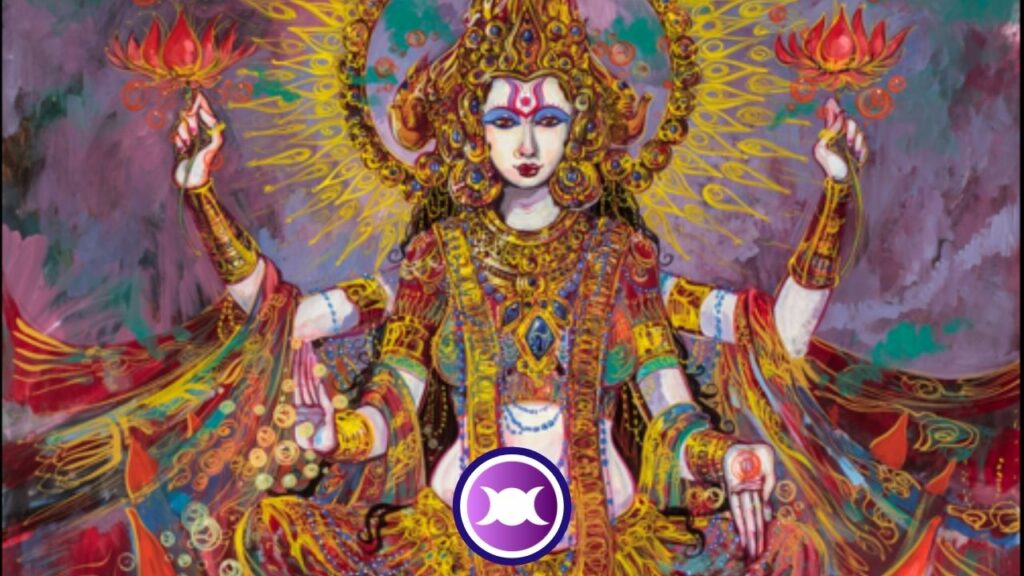
Prosperity and Persistence
Through her teachings, Goddess Lakshmi shows how to achieve goals, material, and spiritual prosperity with wisdom and purity.
Like other Hindu Goddesses, she is also often associated with the lotus flower, which blooms in clean or dirty water.
This is a symbolism for life itself: even though it does not possess favorable conditions to flourish, the lotus flower flourishes showing that with determination and perseverance everything can be achieved.
Tridevi: Lakshmi, Parvati and Saraswati
As I mentioned in the article about the main Hindu Gods and Goddesses, it is common to find Trinities in this pantheon.
One of these trinities is known as Tridevi and it’s formed by three Devi (Goddesses):
- Lakshmi, the Goddess of Beauty and Wealth;
- Parvati, the Goddess of Love and Relationships;
- Saraswati, the Goddess of Arts and Knowledge.
These three Goddesses are very powerful manifestations of Shakti and they are usually present in every house.
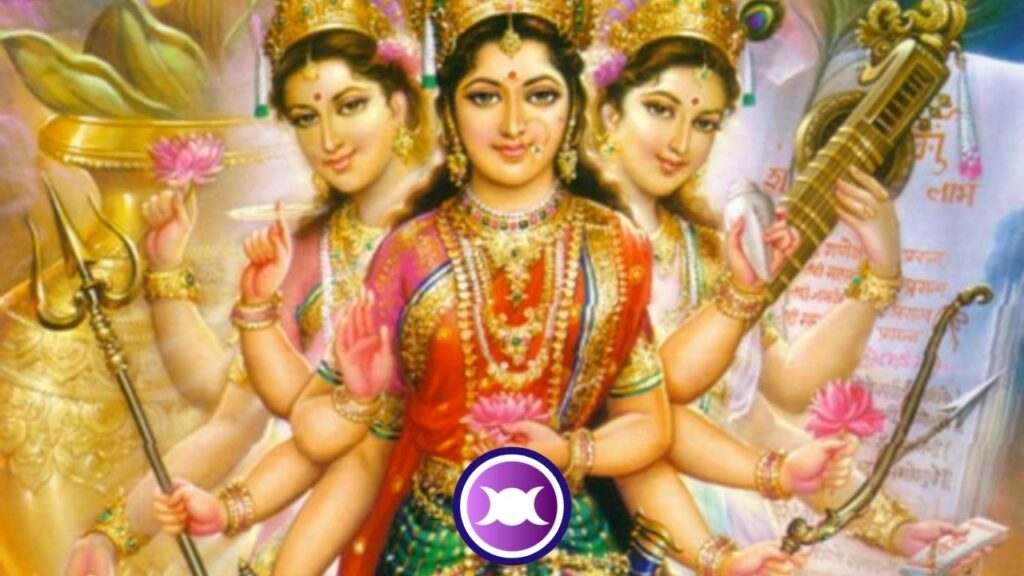
Lakshmi Mantra
Lakshmi’s mantra can be chanted to attract riches, prosperity, and wealth.
The ideal thing is to chant a mantra 108 times. You can do this with the help of a Japa Mala.
Chant this mantra daily and you’ll notice how your life is going to change!
Below you can find Lakshmi mantra lyrics:
Om Shrim Maha Lakshmiyay Namaha
This means something like:
Salutations to the Great Lakshmi
Lakshmi in the Goddess Tarot
Goddess Lakshmi is on the Goddess Tarot by Kris Waldherr. The card number X, Lakshmi, represents Fortune:
The Hindu Goddess of fortune and prosperity. It is believed that Lakshmi is drawn to brilliant jewels, which are like the riches she bestows upon her favourite worshipers.
Kris Waldherr
By the way, this is my favorite Tarot Deck and I always use it during my weekly tarot readings on YouTube.
Lakshmi Images
Below you’re going to find all Lakshmi images I used in this post formatted for Pinterst.
Feel free to save them to your boards!
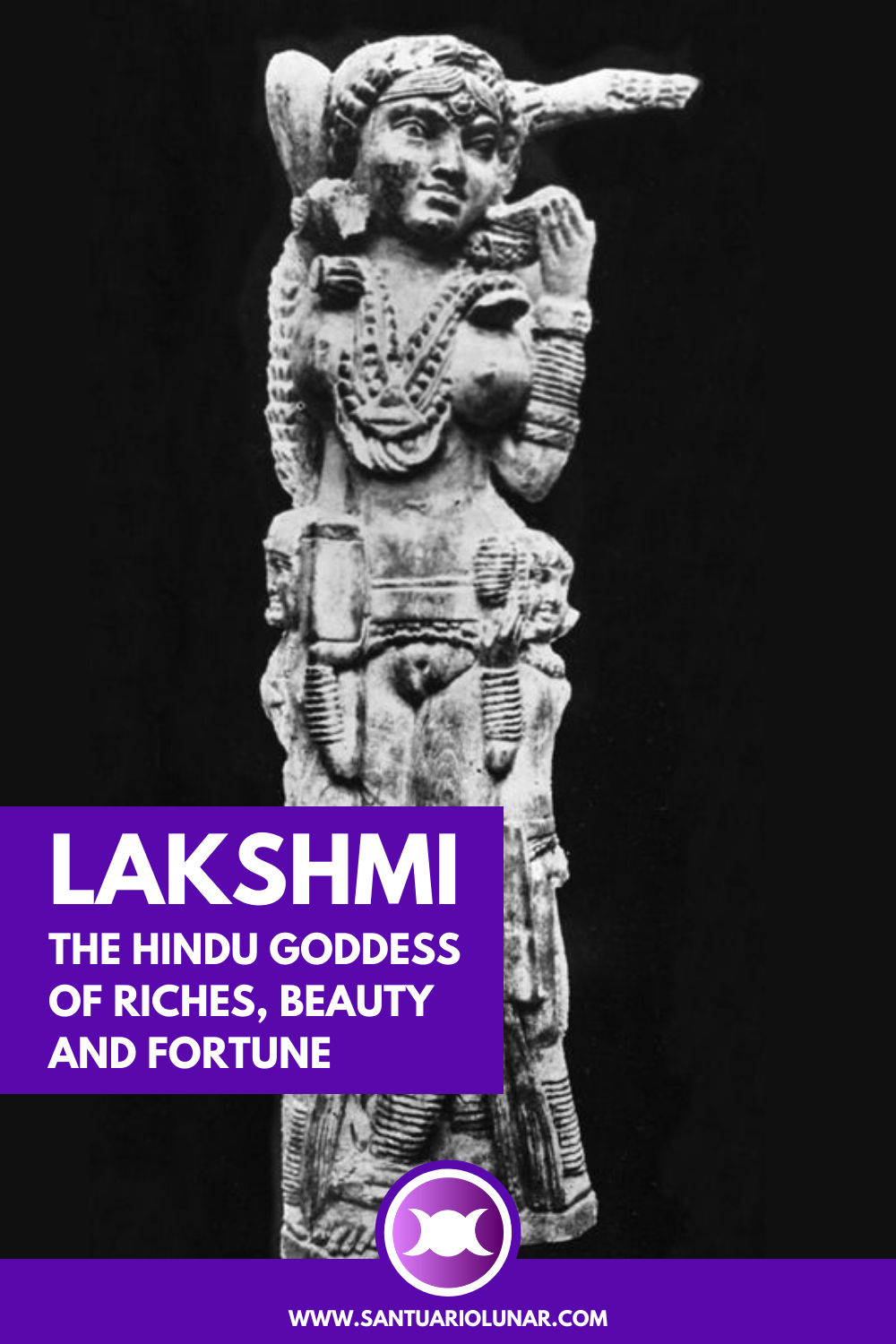
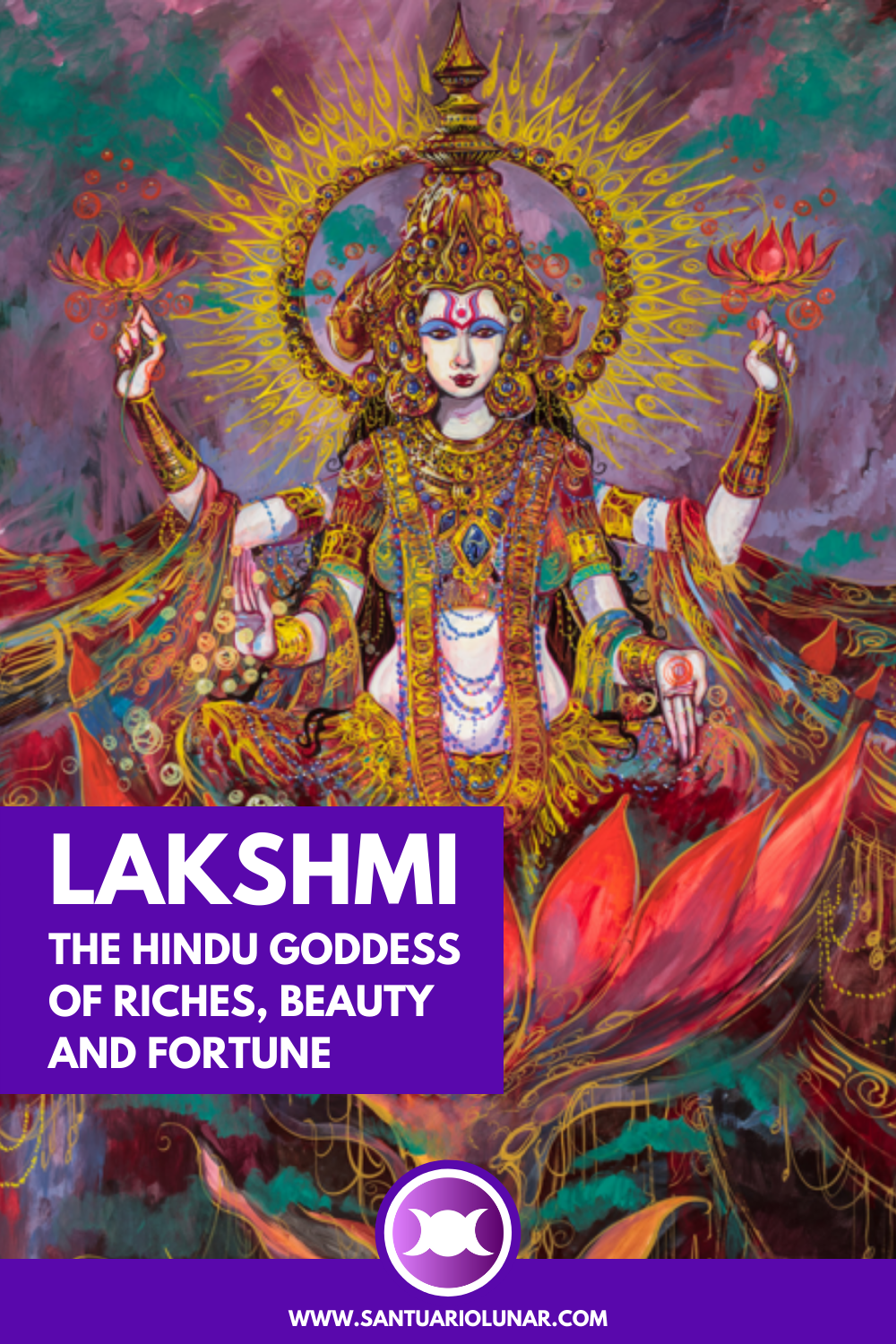
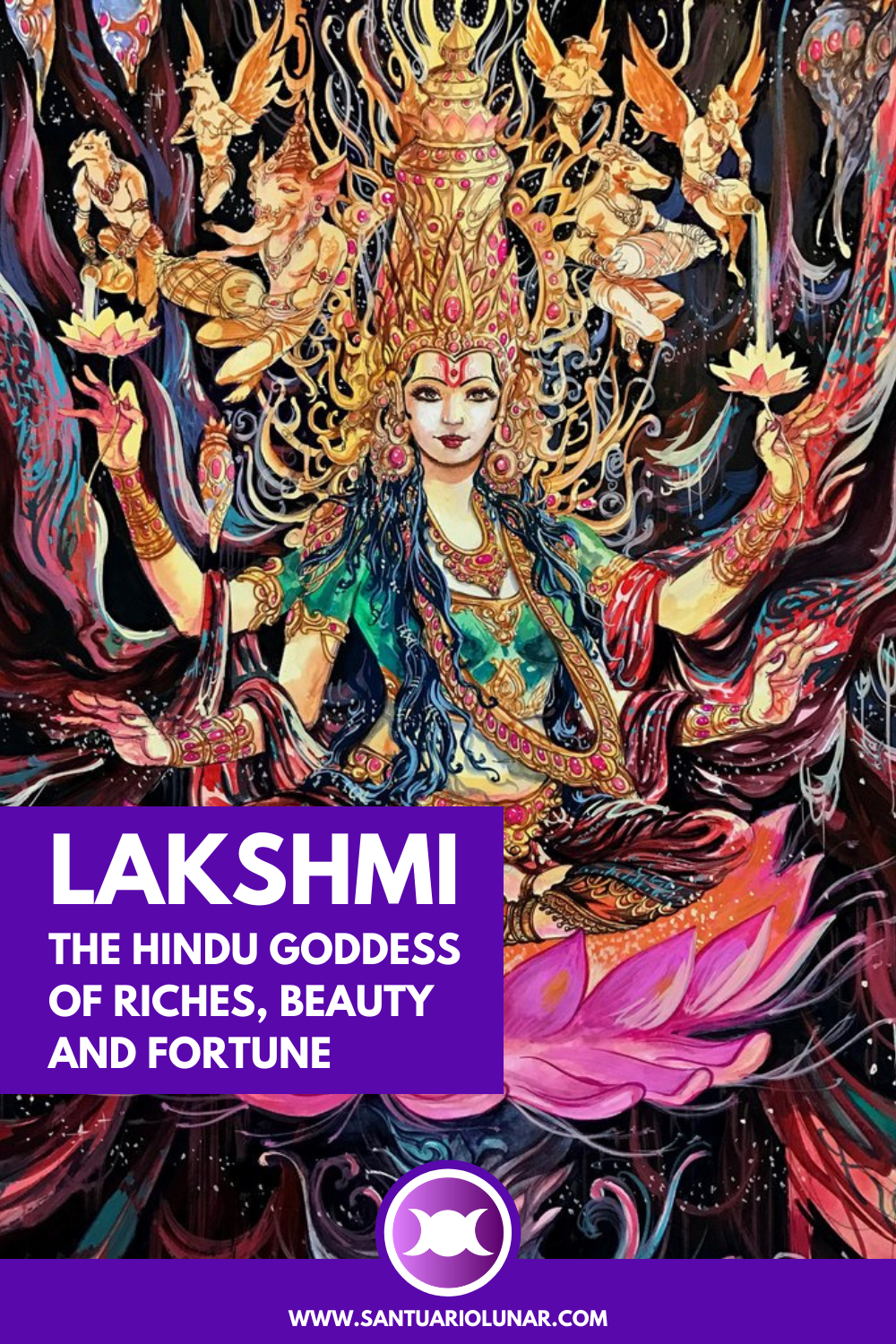
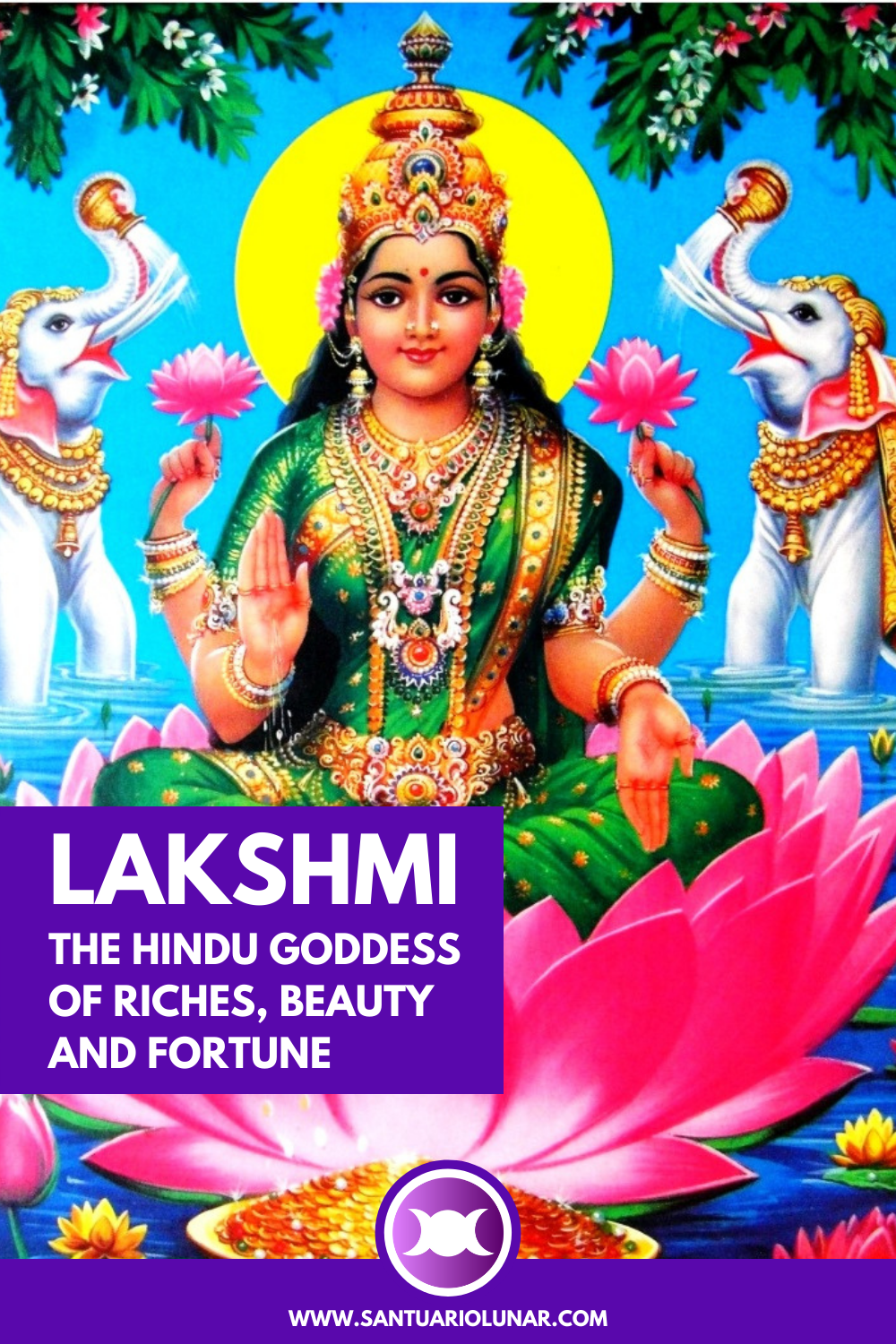

5 thoughts on “Lakshmi – The Hindu Goddess of Riches, Beauty and Fortune”